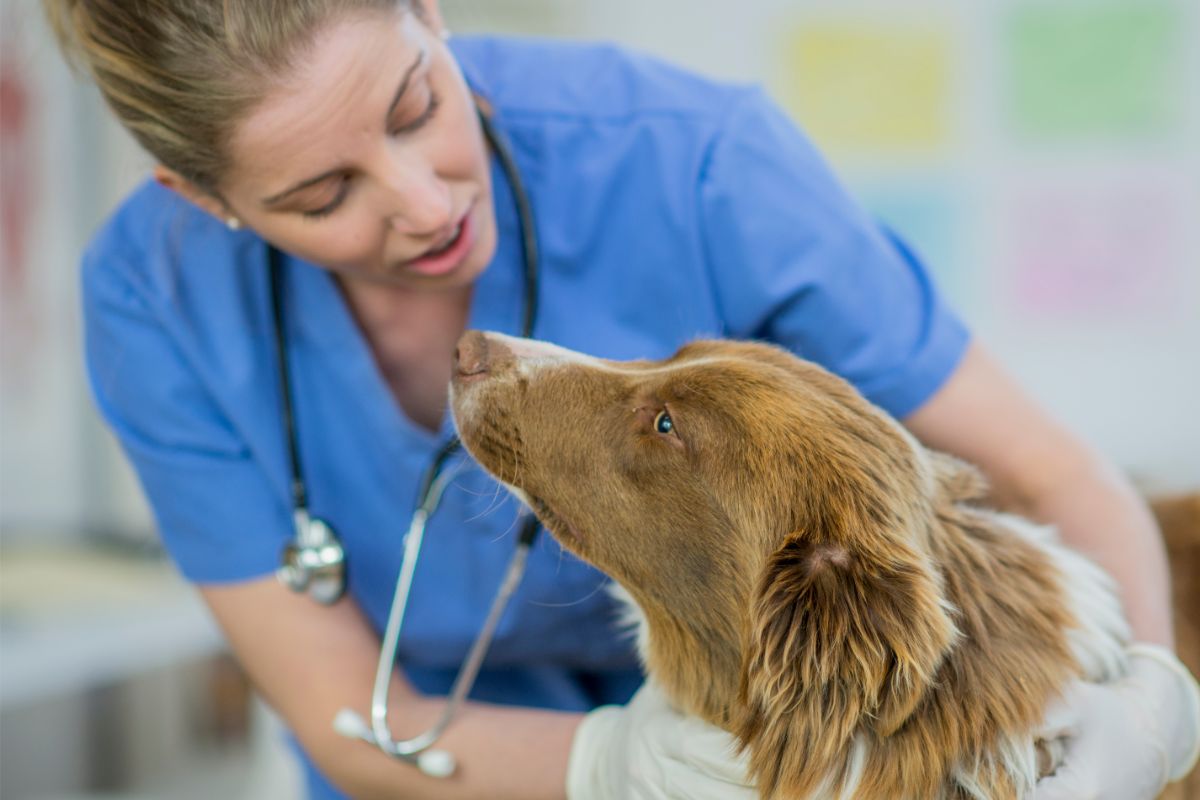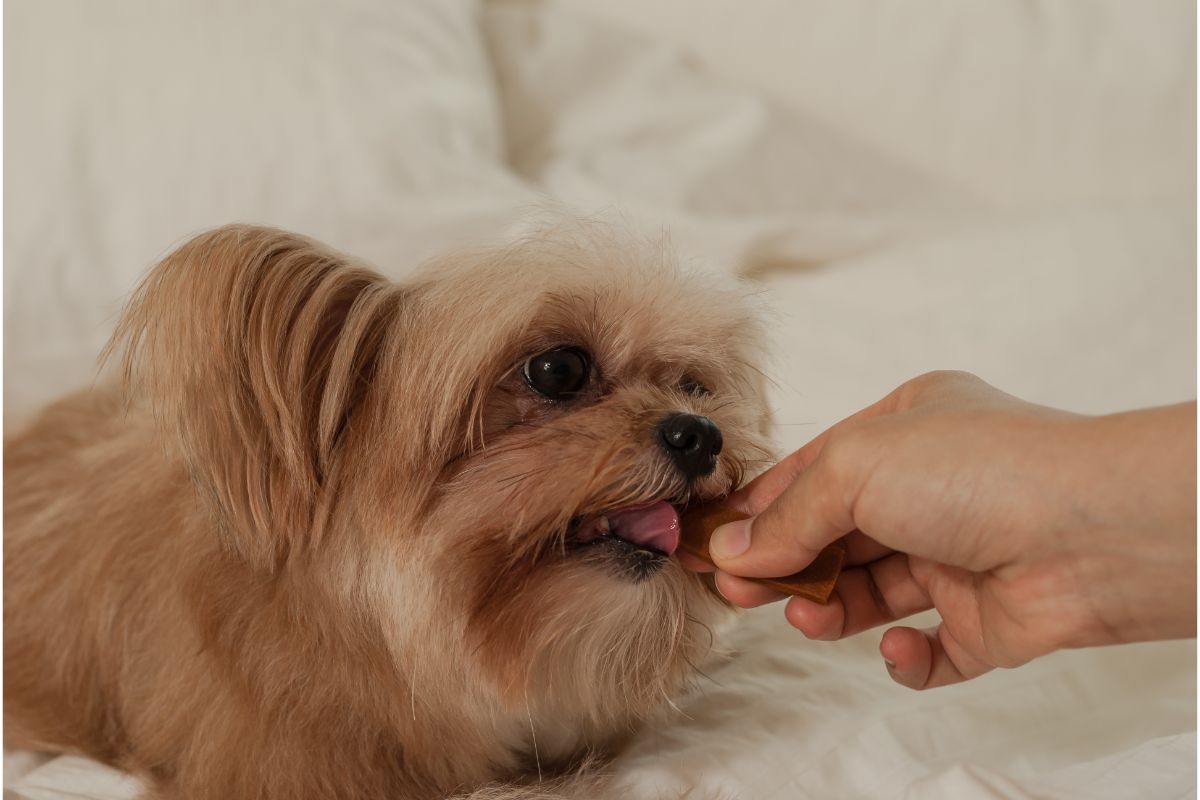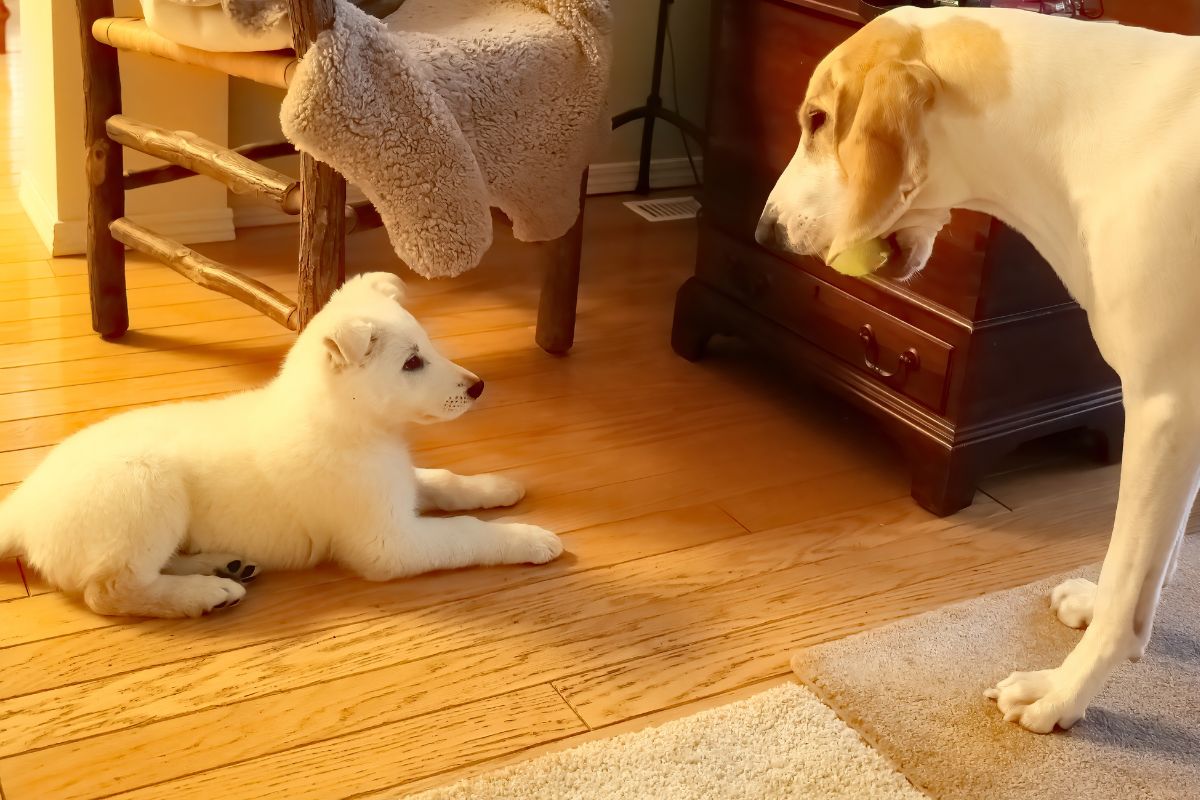Resource guarding is an instinctive behavior for many dogs. It occurs when a dog is worried that their resources are under threat.
They become defensive, trying to keep the perceived “threat” away from the “resource”.
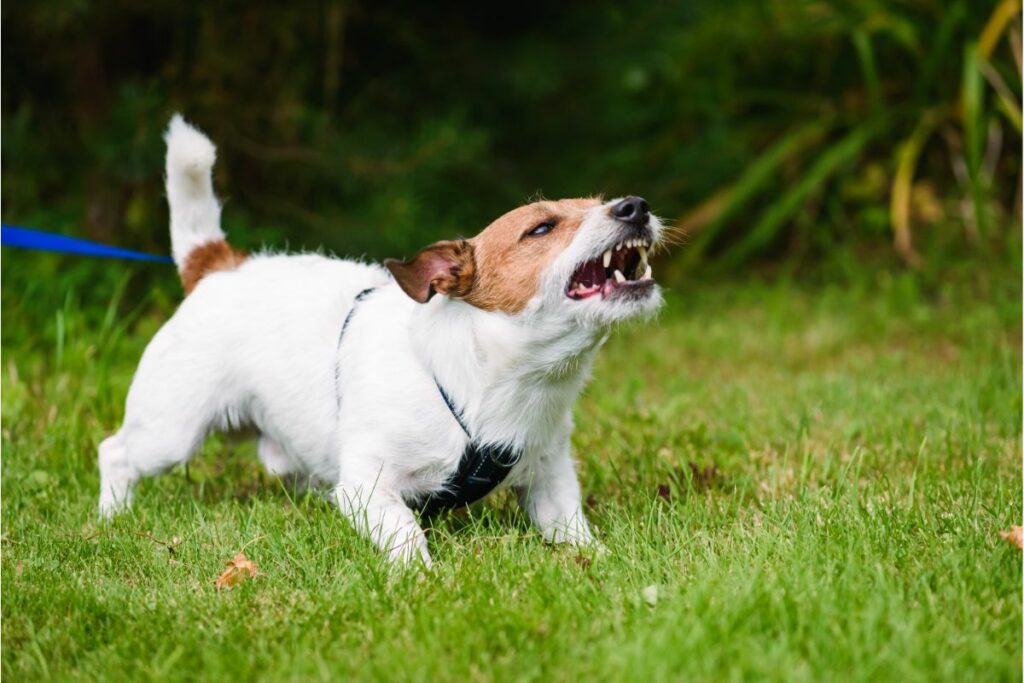
These resources can be food, toys, places, and even people. A dog might guard the resource through mild defensive behavior but even small reactions can escalate to aggression if they’re ignored.
Modifying resource-guarding behavior can take time. With patience, however, it’s possible to limit the negative reaction.
In some cases, it will be necessary to contact a professional dog trainer to help you cope with resource guarding.
In this guide, we’ll explore why resource guarding happens, some ways to prevent it, and what NOT to do.
Why Do Dogs Start Resource Guarding?
Out in the wild, resource guarding was an important survival tool for a dog. In the home, resource guarding is a natural response from a dog that doesn’t want to lose something important.
Let’s start with the basics: what is resource guarding?
Resource guarding is when a dog becomes defensive in order to keep a person or another animal away from a treasured “resource”.
This resource could be food, a place to sleep, toys, or even a person they care about. When the dog thinks the resource is at risk, they act defensively.
Resource guarding can be directed at humans, but it also happens from dog to dog. In this guide, we’ll focus primarily on resource guarding toward humans.
At a basic level, resource guarding is an understandable response. No one wants something they care about to be taken, so we make sure to look after it.
We’ve probably all guarded the most comfortable seat in a room, or hidden a favorite snack at home.
However, when a dog starts resource guarding, it can become defensive and, if the behavior escalates, aggressive.
It’s important to note that resource guarding is not a dog attempting to show dominance. They aren’t trying to compete to be the “top dog” by guarding resources. You shouldn’t try and “establish dominance” to prevent resource guarding.
Resource guarding can often start as subtle signals. These are easy to overlook, so the dog starts to display more obvious protests.
If the owner then punishes this behavior, it can eventually lead to aggressive behavior, such as biting.
Signs of resource guarding include:
- Stiffening up when somebody approaches the resource.
- Hovering over food or toys to prevent anyone from getting close.
- Eating quicker than usual.
- Staring at the person or the animal they’re guarding against.
These subtle signals are used by the dog to avoid conflict while still protecting their resource.
If you overlook these signals or punish the dog for the behavior, resource guarding can escalate to:
- Growling.
- Barking.
- Snapping.
- Lunging.
If these behaviors are punished, resource guarding can escalate to biting.
Any dog can display resource guarding. It isn’t limited to a certain breed or upbringing. However, some triggers can make resource guarding more likely:
- Resource guarding is commonly observed in field-line gun dogs. However, any breed or mix can display resource guarding.
- A dog that has come from a place with limited resources might be inclined toward resource guarding.
- A dog that was raised with harsh training methods or frequent punishment.
- A lack of socialization at a young age can lead to developing resource-guarding behaviors.
- Improper techniques used to prevent resource guarding can actually trigger the behavior. For example, repeatedly removing items can trigger a defensive response.
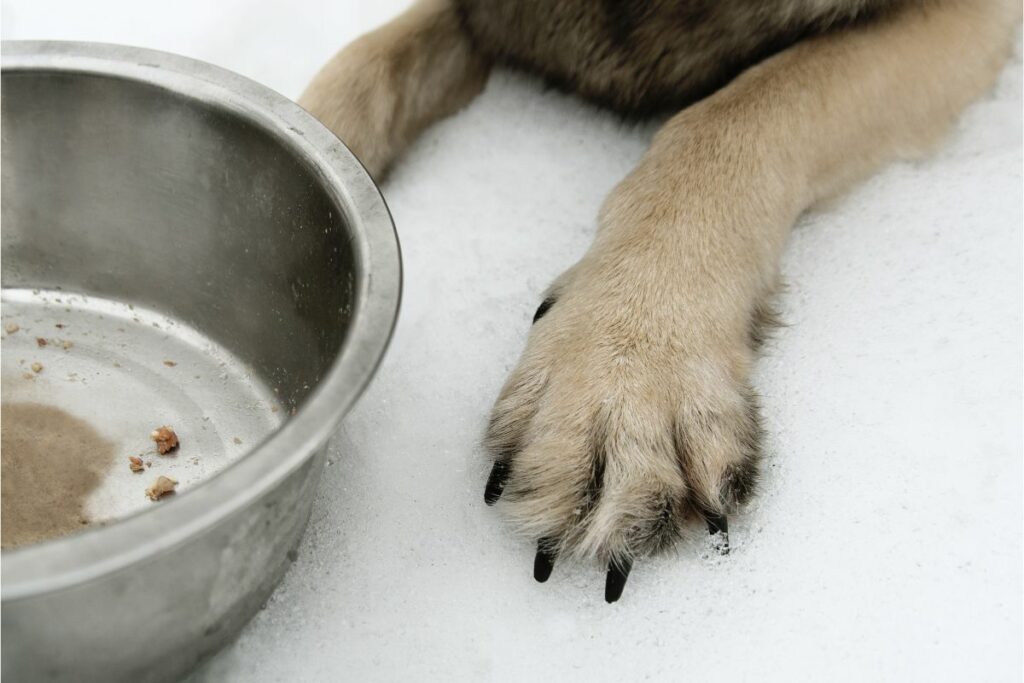
Preventing Resource Guarding
When a dog starts resource guarding, they aren’t responding to an actual threat. Instead, they’re responding to a perceived threat. It doesn’t matter if you’re going to grab the item or simply walk past — the dog is triggered by the worry that something they care about is going to be removed.
The best way to avoid resource guarding is to prevent the behavior before it can develop. These preventative methods should form an important part of your early training.
To prevent resource guarding with food, try the “treat” method. This can help a dog learn that a person approaching them while they eat isn’t a threat and can instead be a good thing.
- Stand back as the dog eats from their bowl, with treats in hand.
- Before they’ve finished eating, when the bowl is partly empty, step close and drop some treats near the bowl. Move away calmly.
- Allow the dog to eat the treats and then return to finish eating from the bowl.
- Repeat the action over the next few days, whenever the dog is eating from their bowl.
- Over time, you can gradually start to drop the treats closer to the bowl. The dog should start to see your approach as a good thing, not a threat.
- Once the dog is comfortable with this behavior, try a new method. Leave some of the dry food out of the bowl at meal times. Allow the dog to finish their food.
- Once the dog has finished, step forward and add a small amount of dry food to the bowl. Repeat until they’ve eaten a full meal.
This method of early prevention shows that a person coming near the bowl is positive. Instead of defending resources from the human, the dog will learn to accept your presence.
A similar method can also be used to prevent resource guarding with toys. Again, this shows that a person approaching as they play doesn’t need to be seen as a threat.
- Wait until the dog is happily engaged with their toy (the resource).
- Place a few treats on the ground near the dog and move away calmly.
- Allow the dog to move away from the toy to take the treats.
- Once the dog has returned to the original resource, repeat the method. Place a few treats on the ground near them, step back, and allow the dog to leave the resource to take the treats.
- When the dog seems comfortable with the movement, place the final few treats near them. When the dog leaves the resource, step forward and pick it up.
This positive reinforcement method will help the dog associate your approach with good things, rather than a threat.
Finally, you can also teach your dog “drop” to reinforce positive associations with letting go of treasured items.
- Begin the training method when they don’t have anything in their mouth. Hold a treat to one side, where the dog can’t see it coming.
- Give the command “drop”, pause, and then drop the treat in front of the dog.
- As the dog moves toward the treat, get down to the floor, and move the treats around. Let the dog eat all the treats, but they should be comfortable with you in their space!
- Repeat this step multiple times over the following days/weeks. Use it in different scenarios, so the dog can get used to the action.
- When the dog has learned to anticipate the treat, you can move on to an actual drop scenario! Begin with a low-value toy that the dog isn’t invested in.
- Give the “drop” command and wait for the dog to drop the item.
- When they drop the item say “yes” and spill the treat. Get close to the floor and move the food around. Try and spill the treat away from the item the dog has dropped.
- Casually pick up the toy and hold it behind your back. Sometimes when practicing the command, return the toy to the dog. Sometimes, don’t take the toy away after they’ve dropped it.
- Keep practicing this method, gradually increasing the importance of the toy you practice with.
- Over time, you can start to practice “drop” with high-value items. As the value of the item increases, so does the value of the treat!
Practicing this technique frequently can allow you to respond quickly and safely if there is a risk. Don’t use “drop” every time your dog has a toy — let them play from time to time — but frequent practice can teach them not to guard their favorite items.
Methods To Stop Resource Guarding
Resource guarding can become aggressive. We recommend speaking to a professional dog trainer who can help you work with the dog and avoid injury. A professional dog trainer will know how to respond to your dog’s body language and how to act in your exact situation.
Seeking outside professional help is particularly important if your dog has a history of aggression.
The method we’re covering here can be used to prevent resource guarding. It’s intended to change how the dog views an approaching person, so they no longer view the person as a threat.
It can be a slow process and there is a risk involved — that’s why we recommend seeking professional assistance.
When following this protocol, keep a close eye on the behavior and body language of the dog. Do not proceed if the dog starts to get aggressive.
- Begin by tethering the dog to a sturdy object. This is important for your safety and the safety of the dog.
- You need a reward for this training to work. Choose a high-value treat that you know the dog will like.
- Give the tethered dog something they’ll be mildly interested in, such as an empty food bowl. A low-value toy can also work. Once they have the item, step away from the area.
- Find a distance that does not elicit guarding behavior from the dog. If they show signs of discomfort, you’re too close! You need to understand the subtle signals from your dog for this to work. If you don’t know how they’re feeling, speak to a professional.
- Staying at a safe distance, walk past the dog. As you walk, toss a high-value treat to the dog. Stay casual and keep walking as you toss the treat. There should be no guarding behavior at this point. If the dog shows discomfort, you’re too close and should move back.
- Repeat this action several times, until the dog seems excited by your arrival. When you walk past, they shouldn’t show much interest in the low-value item you gave them initially.
- When the dog is comfortable with your movement, you can increase the difficulty. Start to walk closer to the dog as you throw the treats. Slowly, your dog should start to become more comfortable with you getting closer.
- Keep repeating this training method over the following days and weeks, getting gradually closer. It can be tempting to rush through the steps, but it’s important to move slowly. Pushing the dog too quickly can be dangerous.
- When you can get close enough to the dog to touch them (and the low-value item) and the dog stays relaxed, you can move on to the next step. Encourage the dog to take the treat from your hand, leaving behind the low-value item.
- When the dog is comfortable moving away from the “resource”, you can progress to the next step. Drop the treat either into the bowl or next to the low-value item. Walk away once you’ve dropped the treat. If the dog seems uncomfortable with you getting close, return to an earlier step.
- Slowly increase how close you get to the item before you drop the treat. Eventually, you should be able to touch the bowl/item before you drop the reward.
- When the dog is comfortable with you touching the item, move on to the next step. Pick up the bowl/toy, then give the dog the treat, and then return the item to them.
- Practice these steps in different places and at different times of the day.
Practicing these steps should help you approach the dog’s items without causing them stress. You have to work through each stage gradually and back up if the dog gets upset.
As well as these specific training exercises, there are steps you can take throughout the day to try and prevent resource guarding.
- Discuss correct behavior with everyone in the household. Make sure they understand not to approach the dog when it’s eating or engaged with a chew.
- Don’t leave out “high-value” items that the dog is likely to get defensive over. For example, if a dog gets defensive over your freshly laundered socks, make sure the washing is put away promptly! Similarly, if a special treat triggered resource guarding, don’t buy that treat.
- Learn the subtle cues that indicate your dog is feeling stressed. Signs such as lip licking, “whale eye”, and stiffness can be easy to overlook but show the dog is feeling upset.
- Take away empty food bowls at the end of meals.
- To avoid confrontation, remove any items or toys that are causing resource guarding when the dog isn’t engaged with them.
- If you do have to take something away from the dog, it should be an exchange. Offer them a treat or another toy, don’t just remove the item they’re guarding and leave them with nothing.
- If your dog shows signs of aggression, return to a safe distance. Don’t punish them, as this will only reinforce bad behaviors. Contact a professional dog trainer for help with the next steps.
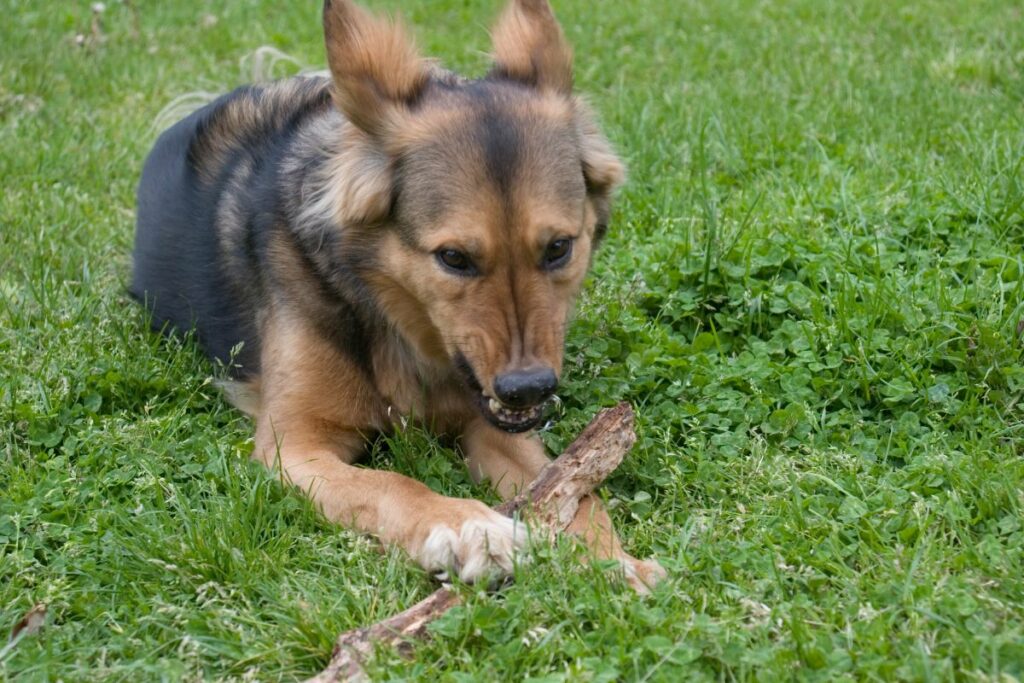
What Not To Do With Resource Guarding
Punishing a dog for resource-guarding is not going to stop the behavior in the long term. Although the punishment might lead the dog to briefly stop acting out, over time, it can lead to an escalation.
If your dog growls when you get close to the bowl, punishing them might stop the growling. However, the next time you approach, the behavior will have escalated. Instead of growling, the dog has now started snapping.
A better approach is to reward good behavior, not punish bad behavior. Teaching the dog that your approach isn’t a threat — and can result in treats! — can prevent guarding behavior.
If you aren’t having success with a reward-based method, consider your approach. Timing is very important with reward-based behavior. The dog needs to know what they’re being rewarded for!
Don’t play with the dog to try and establish dominance. Putting your hand in the bowl as they eat or taking away a toy as they play won’t teach the dog that you’re the boss.
Instead, the dog will start to see you as a threat. They’ll assume that your approach will mean they’re about to lose the thing they want! To prevent you from snatching the resource, they’ll start to act out.
Resource guarding is an ingrained instinct for many dogs. Especially for those that were raised in a bad situation, resource guarding might have been necessary for survival. Modifying that behavior is difficult and requires patience and repeated effort.
That’s why we recommend consulting with a professional dog trainer. They can help you understand your dog’s behavior and find methods that work for both pet and owner!
Conclusion
Resource guarding happens when a dog is worried that something important to them is going to be taken away. This isn’t necessarily provoked by your actions. Sometimes, a dog will act out when you’re just walking by.
The best way to stop resource guarding is to prevent it from starting in the first place. Use a reward method to teach the dog that your presence is safe. If your dog has already started resource-guarding, you can use repetitive training to limit the response.
Motivated by instinct, resource guarding is a difficult behavior to modify. Make sure to remain calm and use positive reinforcement, not punishment.
Frequently Asked Questions
What Triggers Resource Guarding In Dogs?
Resource guarding is often triggered by a worry about losing potential resources. This might be because the dog was raised with scarce resources or they were improperly socialized, but it can occur in any dog, regardless of breed or history. This instinct is likely leftover after evolving as opportunistic feeders.
Can Resource Guarding Be Fixed?
In most cases, resource guarding can be fixed with time, patience, and effort. You may need to contact a professional dog trainer, to help you understand and tackle the problem.
- How To Teach Your Puppy Their Name Easily! - July 18, 2023
- Is Your Puppy Counter Surfing? Find Out How To Stop It! - July 18, 2023
- How To Train Your Puppy For Car Rides: Everything You Need To Know - July 18, 2023




